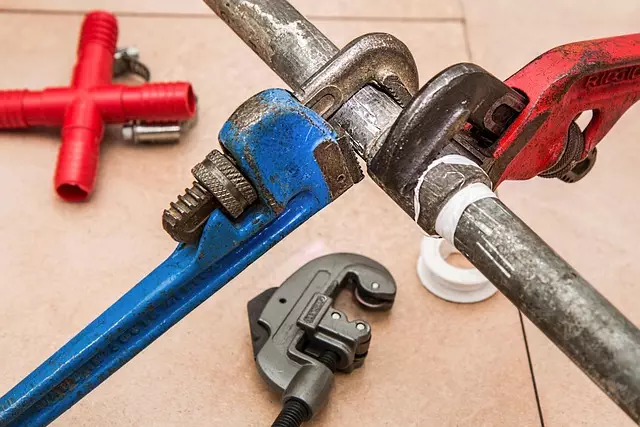Concrete leveling is essential for maintaining structural integrity and aesthetic appeal in varying climates and soil conditions. It addresses cracks, settling, and unevenness by repairing cracks, filling gaps, and adjusting heights. Regular crack repair and maintenance extend the lifespan of concrete structures, prevent costly future repairs, and enhance safety, especially in outdoor areas like driveways and patios. Timely action against water infiltration and erosion is crucial, while selecting experienced professionals ensures durable outcomes. Beyond repair, concrete leveling prioritizes prevention through sealers, fill materials, and proper drainage systems for long-term durability.
Concrete leveling is a vital service that ensures your property’s structural integrity. This article explores the significance of addressing concrete issues, focusing on crack repair as a game-changer for durability and aesthetics. We delve into the root causes of cracks, from environmental factors to age, and uncover effective solutions. Learn about the step-by-step process, benefits of prompt maintenance, and tips to select experts for reliable results. By understanding these aspects, including key SEO keywords like ‘crack repair’, you can effectively manage and prevent concrete damage.
Understanding Concrete Leveling and Its Importance

Concrete leveling is a process that aims to restore the flatness and stability of concrete surfaces, addressing issues like settling, cracks, or unevenness. It’s a critical service for property owners, especially in regions with varying climates and soil conditions, as these factors can contribute to concrete deterioration over time. The importance of leveling lies in its ability to not only enhance aesthetics but also ensure structural integrity.
Leveling services typically involve repairing cracks, filling gaps, and adjusting the height of uneven concrete to create a smooth, even surface. This is particularly crucial for outdoor areas like driveways, walkways, or patios, where instability can lead to safety hazards and damage to adjacent structures or fixtures. Regular maintenance through crack repair and leveling not only extends the lifespan of concrete structures but also prevents costly repairs in the future.
Identifying Common Causes of Concrete Cracks

Concrete cracks can be unsightly and may even compromise the structural integrity of a surface. Identifying the common causes of these cracks is crucial for effective crack repair. One of the primary reasons for concrete cracking is settlement or movement of the underlying soil. This can occur due to dry conditions that cause the soil to shrink, or wet conditions that lead to swelling. Such movements put stress on the concrete, causing it to fracture over time.
Another significant factor is freeze-thaw cycles, especially in regions with cold climates. Water seeps into cracks and freezes, expanding and putting additional pressure on the concrete. This cycle repeats, leading to wider and more numerous cracks. Poor installation techniques, such as inadequate mixing or improper curing, can also result in cracks. Additionally, heavy traffic or constant movement of heavy equipment on concrete surfaces can cause them to crack due to excessive stress and strain.
The Process of Concrete Leveling and Crack Repair

Concrete leveling is a process that involves repairing and restoring uneven or damaged concrete surfaces, focusing on both functionality and aesthetics. It begins with an initial inspection to identify the extent of damage, including cracks, dips, or bumps. The next step is preparation, where the surface is cleaned to remove any debris or old sealers, ensuring proper bonding for new materials.
For crack repair, specialized equipment is used to inject a liquid polymeric compound into the existing cracks. This compound expands, filling and sealing the cracks from within, providing a strong and durable fix. Once injected, the material hardens, creating a smooth, level surface. Additional treatments may be applied depending on the severity of damage, such as adding a fresh coat of concrete or using specialized leveling compounds for more complex cases.
Benefits of Timely Maintenance and Repair

Timely maintenance and repair are essential aspects of concrete leveling services, offering numerous benefits that extend the lifespan of your concrete structures. Regular crack repair, for instance, is crucial in preventing further damage caused by water infiltration and erosion. Even minor cracks can expand over time, leading to costly structural compromises if left unattended. Prompt action not only saves money but also ensures the integrity and safety of buildings, sidewalks, and other concrete surfaces.
Efficient crack repair enhances the overall aesthetics of concrete structures, maintaining their original appearance and value. By addressing issues early on, property owners can avoid the need for complete replacements, which are often more expensive and disruptive. Timely maintenance also contributes to better drainage systems, as cracks can impede water flow, leading to puddles and potential damage to nearby foundations and infrastructures.
Choosing the Right Professionals for the Job

When it comes to concrete leveling, choosing the right professionals is paramount to achieving long-lasting results. It’s essential to look for a team with extensive experience in concrete repair and restoration, particularly in crack repair. A professional company should be well-equipped with advanced techniques and tools to handle various concrete issues, from small cracks to large-scale levelling projects.
Researching their reputation, insurance coverage, and certifications is vital. Check online reviews to gauge customer satisfaction and the quality of their work. Reputable professionals will offer free estimates, ensuring transparency in pricing and services. They should also be licensed and insured, protecting both your investment and providing peace of mind during the repair process.
Preventive Measures to Avoid Future Damage

Concrete leveling services aren’t just about repairing existing damage; they also involve preventative measures to avoid future issues. One of the key strategies is regular crack repair. Cracks in concrete can widen over time, leading to more serious structural problems. Professional contractors can identify potential crack sites and apply sealers or fill materials to prevent their formation or stop them from growing.
Additionally, proper drainage is vital. Water pooling on concrete surfaces can cause cracks by exerting pressure on the material. Ensuring adequate drainage systems and preventing water saturation helps maintain the integrity of concrete structures. Regular maintenance, including cleaning and sealing, also plays a significant role in safeguarding against future damage, ensuring your concrete remains strong and durable for years to come.
